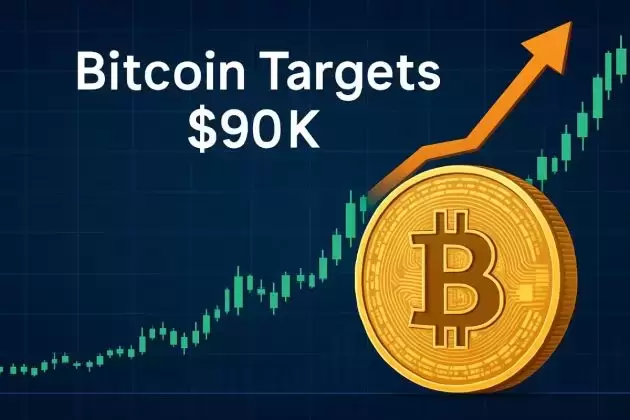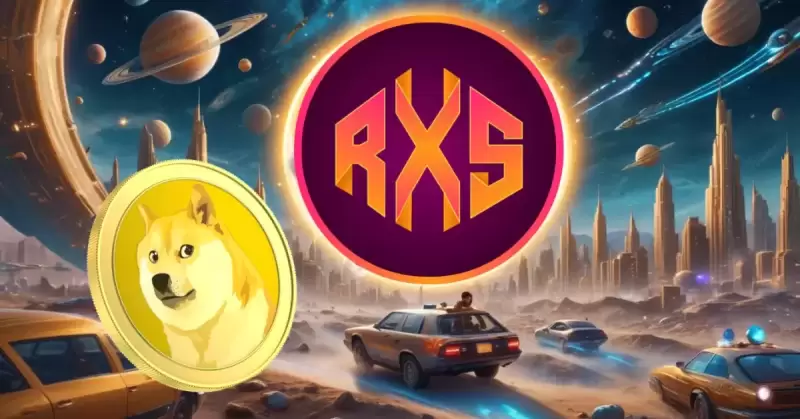 |
|
 |
|
 |
|
 |
|
 |
|
 |
|
 |
|
 |
|
 |
|
 |
|
 |
|
 |
|
 |
|
 |
|
 |
|
SUI試圖通過基於對象的模型來重新構想區塊鏈體系結構,該模型從傳統的基於帳戶的交易設計轉移。

Sui (pronounced “swee”) is a Layer 1 blockchain that boasts high transaction throughput and the ability to handle demanding applications without encountering the usual bottlenecks. Developed by Mysten Labs, Sui is designed to push the boundaries of blockchain technology with its innovative architecture and use of the Move programming language. The goal is not just to achieve theoretical scalability but to demonstrate that blockchain performance can keep pace with real-world demand.
SUI(發音為“ Swee”)是一個1層區塊鏈,具有高交易吞吐量和處理苛刻的應用程序而不遇到通常的瓶頸的能力。 SUI由Mysten Labs開發,旨在通過其創新架構和移動編程語言的使用來推動區塊鏈技術的界限。目標不僅是實現理論可擴展性,而且還表明區塊鏈的性能可以使步伐保持在現實世界的需求中。
The team behind Mysten Labs is composed of ex-engineers from Meta’s now-defunct Diem blockchain initiative. CTO Sam Blackshear created Move, while CEO Evan Cheng led engineering teams at Meta and Apple. CPO Adeniyi Abiodun worked on Novi, Meta’s crypto wallet. This background gives Sui an institutional pedigree, but it also places pressure on the project to prove that it is more than just another overhyped corporate-backed experiment.
Mysten Labs背後的團隊由Meta現已停用的Diem區塊鏈計劃的前工具組成。首席技術官Sam Blackshear創造了Move,而首席執行官Evan Cheng領導Meta和Apple的工程團隊。 CPO Adeniyi Abiodun在Meta的加密錢包Novi上工作。這種背景使SUI具有機構的血統,但它也給項目施加了壓力,以證明它不僅僅是另一個由公司支持的實驗。
Sui has attracted serious investment, with $336 million raised from firms like Andreessen Horowitz (a16z), FTX Ventures, Jump Crypto, Binance Labs, and Coinbase Ventures. This puts Sui in the same funding league as Ethereum and Solana in their early days, with backers betting on Sui’s infrastructure to support high-frequency financial and gaming applications.
Sui吸引了認真的投資,從Andreessen Horowitz(A16Z),FTX Ventures,Jump Crypto,Binance Labs和Coinbase Ventures等公司籌集了3.36億美元。這使SUI在早期與Ethereum和Solana的資助聯盟相同,支持者投注SUI的基礎設施,以支持高頻金融和遊戲應用程序。
Launched in May 2023, Sui quickly built momentum, with over $1 billion in total value locked (TVL) by 2024. With zero reported network outages and an architecture designed for high-speed execution, Sui is positioning itself as a competitor to Solana.
Sui於2023年5月推出,迅速建立了動力,到2024年,總價值鎖定(TVL)超過10億美元。零報告的網絡中斷和設計用於高速執行的架構,Sui將自己定位為Solana的競爭對手。
But the real question is whether Sui can sustain adoption beyond the initial surge of speculation. Competition is fierce. Solana dominates the high-performance Layer 1 category, and Aptos—another blockchain built by ex-Meta engineers using Move—offers a similar pitch.
但是,真正的問題是,Sui是否可以超越最初的投機活動來維持採用。競爭很激烈。索拉納(Solana)主導著高性能的第1層類別,而Aptos(由前Meta工程師使用MOVE構建的另一個區塊鏈)為類似的音調提供了類似的音高。
Whether Sui can differentiate itself over the long term will depend on developer traction, security resilience, and actual user adoption rather than just hype cycles.
SUI是否可以長期區分自身將取決於開發人員的牽引力,安全彈性和實際用戶的採用,而不僅僅是炒作週期。
Let’s explore how Sui works and what the $SUI token is used for.
讓我們探討SUI的工作原理以及使用$ SUI代幣的目的。
Sui’s Technical Architecture & Innovation
SUI的技術架構與創新
Sui’s defining feature is its parallel execution model, which aims to eliminate the congestion that plagues blockchains operating sequentially. Instead of processing transactions in a linear block structure, Sui’s object-centric approach allows independent transactions to finalize simultaneously. This sounds great in theory, but in practice, efficiency boils down to real-world developer implementation and network conditions.
SUI的定義功能是其並行執行模型,該模型旨在消除困擾區塊鏈順序操作的擁塞。 SUI以對象為中心的方法沒有在線性塊結構中處理交易,而是允許獨立交易同時完成。從理論上講,這聽起來很棒,但實際上,效率歸結為現實世界開發人員的實施和網絡條件。
The blockchain runs on a Delegated Proof-of-Stake (DPoS) system, incorporating a Directed Acyclic Graph (DAG) to streamline data flow. Validators—who confirm transactions—are selected based on staked SUI tokens. This boosts throughput while maintaining decentralization, though like all DPoS models, there’s an ever-present risk of validator centralization if staking power concentrates in a few hands.
區塊鏈在授權證明(DPOS)系統上運行,並結合了有向的無環圖(DAG)以簡化數據流。確認交易的驗證者是基於固定的SUI令牌選擇的。這在維持權力中心化的同時增強了吞吐量,儘管像所有DPOS模型一樣,如果放入功率集中在幾隻手中,則存在驗證者集中化的風險。
Another advantage of Sui is its use of the Move programming language. Originally built for Meta’s Diem, Move is designed to reduce security risks in smart contracts. Its resource-oriented approach prevents asset duplication or unintended loss—critical for financial transactions and NFTs—making it a potential upgrade over Solidity.
SUI的另一個優點是使用移動編程語言。 Move最初是為Meta的Diem建造的,旨在降低智能合約中的安全風險。它以資源為導向的方法可以防止資產的複製或意外損失(對於金融交易和NFT至關重要),從而使其潛在地升級了堅固性。
However, Move’s adoption still trails far behind Ethereum’s Solidity, meaning developer migration isn’t guaranteed.
但是,Move的採用仍然遠遠落後於以太坊的堅固性,這意味著無法保證開發人員的遷移。
Another key component of Sui’s architecture is the Narwhal and Bullshark consensus mechanism. Narwhal acts as a mempool, ensuring smooth transaction batching, while Bullshark handles sequencing within the DAG. This setup theoretically enables 125,000 transactions per second (TPS) under ideal conditions—but “ideal” and “real-world” are two very different things. Until Sui undergoes stress tests at scale, these numbers remain optimistic.
SUI架構的另一個關鍵組成部分是戒嚴和牛s的共識機制。獨角鯨充當備忘錄,確保平穩的交易批處理,而Bullshark則在DAG中處理測序。理論上,這種設置在理想條件下每秒可實現每秒125,000件交易,但是“理想”和“現實世界”是兩個截然不同的事情。在SUI按大規模進行壓力測試之前,這些數字保持樂觀。
Beyond speed, Sui addresses data storage costs, a growing problem for blockchain validators. The Storage Fund introduces an upfront payment model where users cover the cost of storing their transactions. This reduces the long-term validator burden, but it’s still unclear if the economics will hold up as transaction volume scales.
超出速度,SUI解決了數據存儲成本,這是區塊鏈驗證器的日益增長的問題。存儲基金引入了前期支付模式,用戶涵蓋存儲交易的成本。這減輕了長期驗證者的負擔,但目前尚不清楚經濟學是否會作為交易量量表保持。
$SUI’s Tokenomics
$ sui的令牌學
Sui’s native token, $SUI, underpins the network. With a fixed supply of 10 billion tokens, distribution is structured to prevent inflation spikes while sustaining long-term liquidity. As of early 2025, around 3.1 billion tokens were in circulation, with more unlocking gradually through 2030.
Sui的本地令牌$ SUI為網絡支撐。固定供應100億代幣,分佈的結構是防止通貨膨脹率峰值的,同時維持長期流動性。截至2025年初,大約31億個令牌正在流通,直到2030年,逐漸解鎖。
This staged release model prevents sudden price crashes, but investor behavior around major unlocks is notoriously unpredictable.
這種分階段的發布模型阻止了突然的價格崩潰,但是眾所周知,圍繞主要解鎖的投資者行為是不可預測的。
The token’s primary functions include:
令牌的主要功能包括:
- Governance: $SUI holders can participate in on-chain governance to influence protocol decisions, such as parameter adjustments and upgrades.
- 治理:$ SUI持有人可以參與鏈上治理,以影響協議決策,例如參數調整和升級。
- Staking: Users can stake their $SUI tokens with validators to contribute to the network’s security and earn rewards in proportion to their stake.
- 積分:用戶可以將其$ SUI代幣與驗證器放置,以促進網絡的安全性並與其股份成比例地獲得獎勵。
- Transaction Fees: Every transaction on the Sui network incurs a fee, which is paid in $SUI and used to compensate validators for their efforts.
- 交易費用:SUI網絡上的每筆交易都會收取費用,該費用以$ SUI支付,用於補償驗證者的努力。
- Accessing DApps: DApps
- 訪問Dapps:Dapps
免責聲明:info@kdj.com
所提供的資訊並非交易建議。 kDJ.com對任何基於本文提供的資訊進行的投資不承擔任何責任。加密貨幣波動性較大,建議您充分研究後謹慎投資!
如果您認為本網站使用的內容侵犯了您的版權,請立即聯絡我們(info@kdj.com),我們將及時刪除。
-

-

-

-

-

-

- 比特幣(BTC)價格預測:BTC飆升了近5%
- 2025-04-21 22:50:12
- 比特幣在周日飆升了近5%,朝著$ 90,000的大關推動,這是由於歐洲和中國的貨幣刺激疲軟和貨幣刺激的增長驅動。
-

- 韓國銀行打算積極參與製定政府關於加密貨幣的法規
- 2025-04-21 22:45:12
- 韓國銀行宣布打算在製定政府在該國使用加密貨幣的法規方面發揮積極作用。
-

-



























































